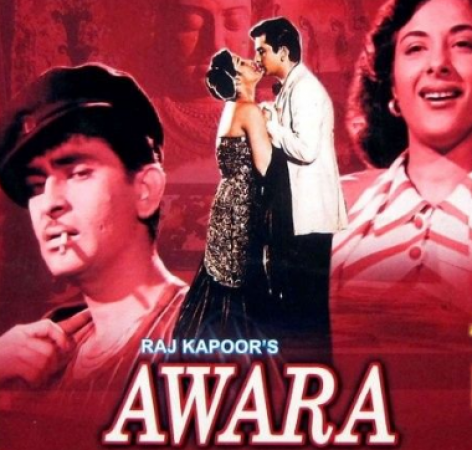
The distinction between fiction and reality is frequently blurred in cinema because of this remarkable ability to combine the two. The legendary Raj Kapoor's timeless classic "Awaara" (1951), which he both directed and produced, is a shining example of how a filmmaker's personal experiences can be intricately woven into their work. The character played by Raj Kapoor is given the prisoner number 308, which is one of the movie's most intriguing elements. Surprisingly, this number had a meaningful connection to a real-life legal challenge Kapoor faced rather than being merely a coincidence. This article examines the intriguing blending of fact and fiction in "Awaara," examining the importance of prisoner number 308, its connection to Article 308, and the significant influence it had on the movie's plot.
A masterpiece from 1951 called "Awaara" explores morality, complex human emotions, and the conflict between good and evil. Raj Kapoor, who also serves as the film's director, stars as the title character in Raj, a story about a young man whose life takes an unexpected turn as a result of factors beyond his control. The film's timeless songs and socially relevant themes, along with Kapoor's nuanced portrayal, propelled "Awaara" into the top echelon of Indian cinema.
The prisoner number assigned to Raj Kapoor's character in "Awaara" is number 308. This is one of the film's most intriguing elements. This number has a deeper significance than just where it appears in the story. It has a direct connection to Article 308 of the Indian Penal Code, which Kapoor was accused of violating in his private life and was put on trial for. The film gains a significant amount of authenticity from this real-life connection, making Kapoor's on-screen persona a reflection of his own experiences.
Article 308 of the Indian Penal Code deals with "attempts to commit culpable homicide." The relationship between Kapoor's prisoner number and Article 308 adds another level of symbolism to the storyline of the movie. Raj, played by Kapoor, also has to negotiate a hazy line separating right and wrong; the difficulties he faces are similar to those the actor encountered in his own legal battles. By combining the fictional world and real-life experiences, this connection forges a poignant parallel that enriches and deepens the narrative.
Raj Kapoor's choice to include elements of his own life in "Awaara" was both a risky artistic move and a way for him to release his emotions. Kapoor managed his emotions and shared his journey with the world by weaving his personal struggles into the story. The personal and artistic are combined in a powerful way that demonstrates the power of film as a vehicle for healing and self-expression.
The interaction between Kapoor's actual legal disputes and the plot of "Awaara" also reflects contemporary societal issues. Justice, morality, and class disparities are some of the themes the movie tackles; these topics were important to Kapoor's life as well as to a larger audience. The film's narrative gained depth and relevance thanks to this reflection on society's problems, which turned it into a potent allegory on the human condition.
The fusion of fiction and reality in "Awaara" not only improved the story but also had a lasting impact on Indian cinema. A remarkable example of Kapoor's artistic vision and his willingness to be transparent about his personal experiences for the purpose of storytelling is his use of the prisoner identification number 308 as a reference to Article 308. The film's ability to connect with viewers on a highly personal and emotional level is just one of many factors that have contributed to its enduring impact.
The 1951 film "Awaara" serves as evidence of how closely personal experiences of an artist can inform their work. Raj Kapoor used the movie as a platform to share his own struggles and victories by using prisoner number 308 as a connection to Article 308. This illustrates the remarkable convergence of fiction and reality. "Awaara" was transformed from a cinematic gem to a profound exploration of the human condition as a result of this connection, which gave the story authenticity, depth, and symbolism. "Awaara" has maintained its audience resonance through Kapoor's journey of creative expression and catharsis, demonstrating the enduring power of film to close the gap between imagination and reality.
The Unconventional Setting of 'Gol Maal' in Mukherjee's Bungalow
The Alpine Elegance of Yash Chopra's 1970s Cinematic Romance